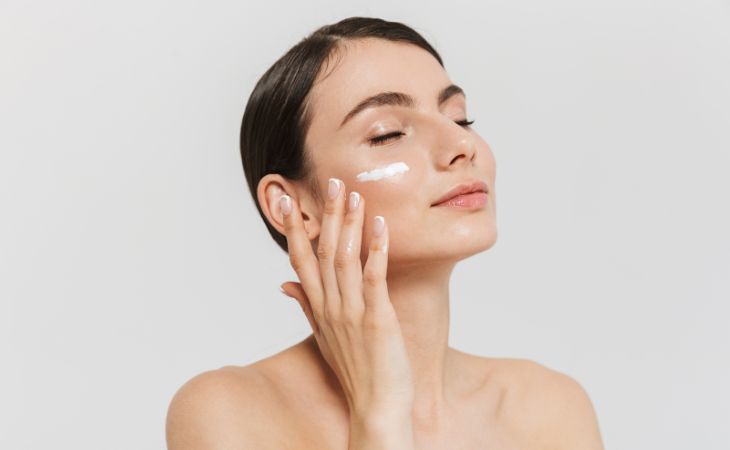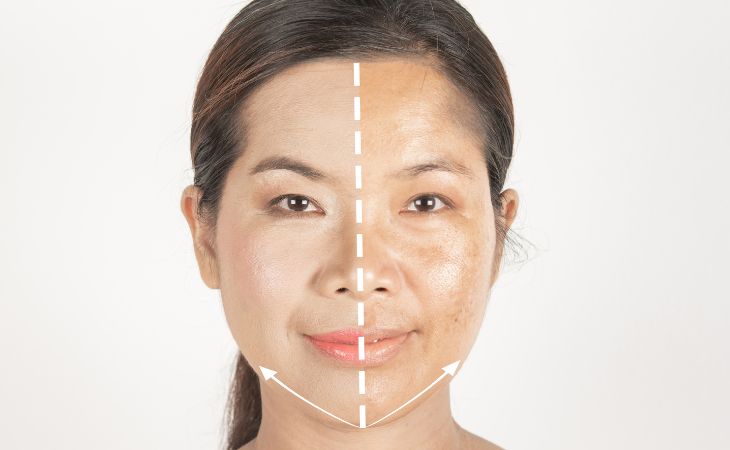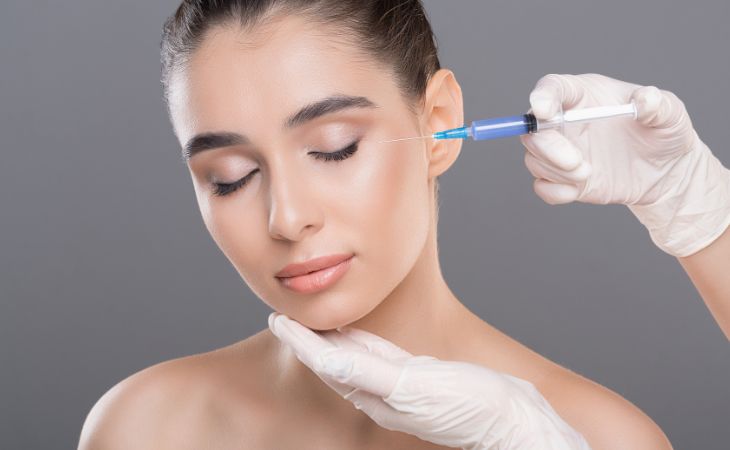Using acids on the skin for treatment may sound intimidating, but in reality, these are natural and beneficial ingredients found in the skincare products you use. You might have seen their names on product packaging without fully understanding what they do. In this comprehensive guide, we will introduce you to various types of acids commonly used in skincare preparations. Our aim is to provide a clear explanation of each acid's role so that you can effectively care for your skin armed with the right knowledge.
Understanding how these acids work and their specific benefits will empower you to make informed decisions about your skincare routine.
1. Ascorbic acid
Vitamin C, also known ascorbic acid, is a widely recommended compound by dermatologists due to its numerous benefits for the skin. Dr. Deirdre Hooper, a dermatologist from New Orleans, explains that there have been extensive studies showcasing the effectiveness of vitamin C as an anti-aging agent. It acts as an antioxidant, shielding the skin from air pollution and preventing the production of pigments. Additionally, it stimulates collagen production in the skin, which has been proven in a 2014 study.
However, Dr. Hooper emphasizes that vitamin C's potency depends on its formulation: "vitamin C can only exhibit such powerful effects when combined with the right ingredients." The challenge with using pure ascorbic acid is its instability when exposed to sunlight. To ensure stability and maximize results, Dr. Hooper advises seeking products containing L-Ascorbic Acid - the most stable form of vitamin C - or products that include both vitamin E and ferulic acid.

2. Ferulic Acid
Vitamin C is frequently combined with this acid to maintain its stability. If your chosen product does not include ferulic acid, the vitamin C will lose its effectiveness as soon as you expose it to sunlight after opening. Additionally, ferulic acid serves a dual purpose: supporting vitamin C and acting as a potent antioxidant that safeguards collagen and elastin in the skin. It also reduces pigment production, thus preventing skin spots and dark marks.
3. Azelaic Acid
Another noteworthy acid is azelaic acid, which originates from a type of fungus naturally present in our skin. This particular acid offers an excellent solution for black spots on the skin. In fact, a research review from 2014 even suggests that it could be an effective treatment for melasma - a condition characterized by tan or darkened skin color observed in pregnant women or those using birth control or hormone replacement therapy.
Dr. Noelani Gonzalez, a specialist in dermatology at Sinai Hospital in New York, explains that the use of azelaic acid can disrupt the skin's pigmentation process by inhibiting the enzyme tyrosinase. This particular enzyme plays a significant role in the production of melanin pigment. By reducing its activity, azelaic acid essentially reduces the amount of pigment produced by the body over time, resulting in lighter skin tone.
Additionally, if you suffer from rosacea, your dermatologist may recommend treatment with azelaic acid. This is because it has been found to effectively reduce redness, swelling, and inflammation associated with this condition.
4. Ellagic Acid
This particular acid is derived from compounds that are present in various fruits like berries, pomegranates, and nuts. Similar to azelaic acid, ellagic acid also possesses skin lightening properties. In a study conducted in 2013, it was demonstrated that when combined with salicylic acid (which will be explained further later), ellagic acid offers an effective treatment for reducing pigmentation. This treatment produces results comparable to those achieved by using a skin lightening gel containing hydroquinone 4%, such as Azomed C at 4%. Hydroquinone is widely recognized as one of the most efficacious substances for addressing dark spots on the skin; however, it does come with side effects like dryness and irritation. Consequently, you may opt to address your skincare concerns by utilizing products infused with both ellagic acid and salicylic acid.
5. Kojic Acid
This particular acid is derived from the fermentation process of a fungus. Similar to azelaic acid, it works by inhibiting the enzyme tyrosinase, which is responsible for melanin production. It is commonly added to skin lightening products; however, a study published in 2014 suggests that it may not be as effective as hydroquinone 4% for treating skin spots. Therefore, it is recommended to opt for azelaic or ellagic acid when seeking treatment for such conditions.

6. Salicylic Acid
Salicylic acid is primarily used for acne treatment due to its ability to exfoliate the outer layer of the skin. Being oil-soluble allows it to penetrate deep into pores and eliminate accumulated dirt from within. For individuals dealing with acne concerns, using a daily skin cleanser containing salicylic acid is highly recommended.
7. Glycolic Acid
Dr. Brooke Sikora, a Massachusetts-based dermatologist, explains that glycolic acid is derived from natural sources abundant in sugar like sugar cane, sugar beets, pineapple, melon and unripe grapes. It can be found in various skincare products such as skin cleansers, masks, serums and moisturizers. The unique ability of glycolic acid to penetrate the outer layer of the skin allows it to accelerate the cell cycle and effectively remove dead skin cells. This makes it an essential component of any skincare routine.
According to a study published in 2019, if you have both acne and aging skin, glycolic acid can be the perfect solution for you. Dr. Sikora suggests that this ingredient can address both concerns simultaneously. Glycolic acid is particularly effective in treating acne-prone skin and hyperpigmentation, making it capable of addressing multiple skin issues with just one product. This not only saves you money but also time. Dr. Sikora advises using moisturizers containing glycolic acid instead of relying solely on skin cleansers because the longer this acid remains on your skin, the more effective it becomes.
8. Hyaluronic Acid
This acid efficiently infuses moisture into the skin and has the ability to attract water from its surroundings, weighing 1,000 times more than its own weight. When applied to the skin, products containing this acid prevent sagging of the outer layer, soften wrinkles, and even enhance the natural glow of the skin. According to Dr. Sikora, this acid has its limitations as well. Due to its large molecular size, it is unable to penetrate deep into the dermis (the innermost layer of the skin) when used in topical preparations. As a result, it does not promote collagen production in these preparations alone.
To stimulate collagen synthesis with this acid's help, deep injections are required for it to reach deeper layers of the skin where collagen production occurs naturally. These injections effectively treat deep wrinkles and provide substantial volume to rejuvenate aged or damaged skin.

9. Lactic Acid
Derived from fermented milk, this acid is the sole alpha-hydroxy acid (AHA) with the ability to both deeply moisturize the skin and exfoliate its outer layer. Consequently, it is considered gentler on the skin compared to other acids used for cleansing purposes. Dermatologists therefore advise limiting its use on facial skin while recommending its application on other parts of the body. Notably, it can effectively address dryness on feet as well as keratosis pilaris - a condition characterized by small bumps typically found on the upper arms
10. Mandelic Acid
This particular acid belongs to the AHA category and is derived from almonds. It possesses the ability to cleanse the outer layer of the skin. Unlike other acids, it has been shown in studies to have a gentle effect on the skin, making it suitable for individuals with sensitive skin. Additionally, this acid aids in regulating sebum production in the skin glands and is primarily utilized for its anti-aging properties. In a 2018 study, researchers demonstrated that applying a preparation containing this acid twice daily for four weeks resulted in a 24% improvement in skin strength and firmness.
11. Phytic Acid
Phytic Acid (also known as Phytic Acid) is sourced from seeds and legumes. It possesses antioxidant qualities that assist in refining skin texture. While it falls under the category of AHA, which makes it stronger than non-AHA acids, there haven't been as many studies conducted on its efficacy compared to other acids commonly used in skincare routines
Key Points about Using Acids for Skincare:
1. Ensure you select an appropriate acid based on your specific skincare needs.
2. Conduct thorough research on different types of acids before incorporating them into your routine.
3. Consult with a dermatologist or skincare professional if you are uncertain about which acids are suitable for your skin type.
4. Always follow instructions provided by product manufacturers when using acid-based skincare products.
5. Wear sunscreen during daytime as some AHAs can increase sun sensitivity
According to a study published in 2012, certain skincare preparations that include the acids discussed in this guide can increase skin sensitivity to the sun. As a result, it is strongly advised to apply a sunscreen along with these products in order to maintain skin health. Additionally, it is highly recommended to seek guidance from a dermatologist, who can assist you in identifying the most appropriate acids for your specific skin type.



